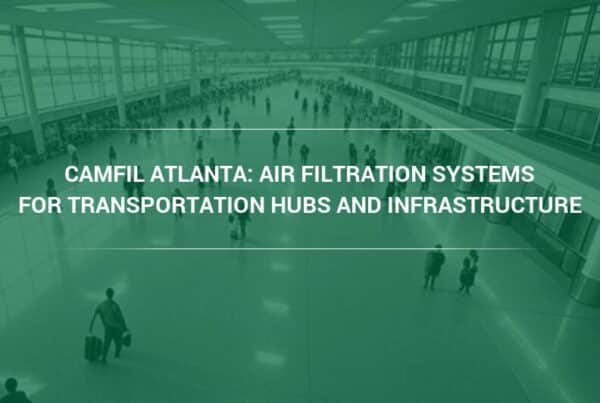Fireworks were a factor in over 10,000 emergency room admissions in the U.S. last year, according to the United States Consumer Product Safety Commission (CPSC), and nearly three-quarters of those injuries occurred between mid-June and mid-July.
While burns and other acute injuries are unsurprising effects of DIY fireworks displays, fireworks emit potentially hazardous air pollutants that can have long-term health effects, even for people who are not involved in lighting them.
What Air Pollutants Come from Fireworks?
Fireworks are made of gunpowder (or black powder), which is a mixture of potassium nitrate, sulfur, and charcoal that burn quickly and explode to act as a propellant. While the products of gunpowder combustion vary based on its exact composition, gunpowder typically produces the following pollutants when burned:
- Carbon dioxide (CO2), which can cause headaches and dizziness at high concentrations.
- Carbon monoxide (CO), a poisonous gas that reduces the flow of oxygen around the body when inhaled, leading to dizziness, confusion, and potentially organ damage and death.
- Nitrogen (N2), a stable gas that naturally makes up the majority of the earth’s atmosphere.
- Potassium carbonate (K2CO3), a caustic chemical used in industrial processes that can cause severe respiratory irritation inhaled.
- Potassium sulfide (K2S) quickly reacts with moisture in the air to form potassium hydrosulfide and potassium hydroxide, which burns the skin, damages the eyes, and irritates the lungs, causing permanent damage to respiratory tissue at high concentrations.
Fireworks also contain a variety of metals that produce bright colors when burned:
- Sodium—yellow
- Barium—green
- Strontium—red
- Copper—blue
- Magnesium—white
These metals can be mixed in different proportions to create an entire spectrum of colors. After fireworks are set off, these metals can remain suspended in the air as particulate matter.
Another harmful kind of pollution emitted by fireworks is a kind of gas called polycyclic aromatic hydrocarbons (PAHs). The health effects of PAHs vary, but many of these chemicals are classified as carcinogenic (cancer-causing), while others cause severe liver and kidney damage.
Study Shows a 42% Increase in Particulate Matter on July 4th and 5th
A study published in the journal Atmospheric Environment gathered air quality data from 315 locations in the United States over fourteen years. The researchers found that particulate matter increased by 42% on July 4th and 5th compared to the two preceding and following days. In many areas, the Fourth of July was consistently the most polluted day of the year. This effect was found regardless of whether the Fourth of July fell on a weekend or weekday.
It is important to note that the composition of particulate matter that comes from Independence Day fireworks displays differs from what is typically found in the air, containing the dangerous byproducts of setting off fireworks, such as potassium hydroxide and potassium carbonate, discussed above.
Preventing Health Effects from Pollution with Indoor Air Purifiers
While it can be difficult to control your exposure to outdoor air pollution, Americans spend more than 90% of their time indoors on average, where air can be fifty times more polluted than the air outdoors. As a result, using the right air filtration technology to improve indoor air quality can significantly reduce exposure to dangerous air pollutants that cause short- and long-term health effects.
To effectively protect yourself against harmful pollutants, consider adding a portable room air purifier that uses both factory-tested and certified HEPA filters (which trap particulate matter) and activated carbon filters (which remove gaseous pollutants such as ozone, sulfur dioxide, nitrogen dioxide, and volatile organic compounds).
Learn more: Camfil’s Medical-Grade City M Air Purifier
About Camfil Clean Air Solutions
For more than half a century, Camfil has been helping people breathe cleaner air. As a leading manufacturer of premium clean air solutions, we provide commercial and industrial systems for air filtration and air pollution control that improve worker and equipment productivity, minimize energy use, and benefit human health and the environment. We firmly believe that the best solutions for our customers are the best solutions for our planet, too. That’s why every step of the way – from design to delivery and across the product life cycle – we consider the impact of what we do on people and on the world around us. Through a fresh approach to problem-solving, innovative design, precise process control, and a strong customer focus we aim to conserve more, use less and find better ways – so we can all breathe easier.
The Camfil Group is headquartered in Stockholm, Sweden, and has 30 manufacturing sites, six R&D centers, local sales offices in 35+ countries, and about 5,600 employees and growing. We proudly serve and support customers in a wide variety of industries and in communities across the world. To discover how Camfil USA can help you to protect people, processes and the environment, visit us at www.camfil.us/
##
Media Contact:
Lynne Laake
Camfil USA Air Filters
T: 888.599.6620
E: Lynne.Laake@camfil.com
F: Friend Camfil USA on Facebook
T: Follow Camfil USA on Twitter
Y: Watch Camfil Videos on YouTube
L: Follow our LinkedIn Page
Sources:
https://dnr.wisconsin.gov/topic/AirQuality/Fireworks
https://www.sciencedirect.com/science/article/pii/S1352231015301369
https://www.cpsc.gov/s3fs-public/2022-Fireworks-Annual-Report.pdf



